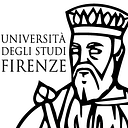Lothar’s manuscripts, manuscripts for Lothar, manuscripts of Lothar’s time
From Firenze University Press Book: Networks of bishops, networks of texts
Laura Pani, University of Udine

- A Lothar library?
I will start with that which does not exist anymore, that is with the traces of Lothar’s library or, at least of the books that Lothar, similarly to other Carolingian sovereigns, owned and presumably read . With the exception of the famous display codices discussed in the next section of this paper, only secondary sources, such as letters and inscriptions, or later manuscript copies, actually allow us to retrace what seemed to be more, in any case, a set of books meant to meet the emperor’s interests and inclinations, than an organized collection. Some time between 854 and 855, Lothar wrote to Hrabanus, at that time bishop of Mainz, asking for a lectionary for the Sundays and the other main liturgical feasts, to be read to him during his meals. Lothar’s request was that each reading from the Gospel would have to be followed by an explanation by one of the Fathers of the Church; this would mean that he would not have to take with him «omnem commentariorum copiam» on every expedition. For similar, practical reasons, Lothar asked that this homiliary should be contained in just one volume, although at the end of the letter he considered that the work could be divided into two or even three books. Hrabanus granted Lothar’s wish. A tenth-century copy of the first volume of his homiliary, from Christmas to Holy Week, is now MS Jena, Thüringer Universitäts- und Landesbibliothek, El. f. 32, and includes in the first folios Lothar’s letter to Hrabanus and Hrabanus’ answer accompanying the work. The second volume, from Easter to Pentecost, is now missing but was still extant in the seventeenth century, when an edition was made from it in Cologne, whilst the third volume was probably never compiled due to Lothar’s death.
The abundance of commentaries mentioned by Lothar in his letter suggests that his library was rich in exegetical books, which is confirmed by what we know from his previous exchanges with Hrabanus himself. Between 840 and 842 Lothar had been the recipient of Hrabanus’ Commentary on Jeremiah, begun during his father’s reign. Moreover, between 842 and 846, Lothar had asked Hrabanus for more «expositiones», namely on the beginning of Genesis, Jeremiah’s sermons and Ezechiel, that had not been covered by Bede, Jerome and Gregory the Great respectively. Eventually, Hrabanus had sent to Lothar his commentary on Ezechiel, at the same time explaining why he had not written one on Genesis, and recalling having already sent to him the commentary on Jeremiah6. In addition to this, the Commentary on the Song of Songs by the monk of Luxeuil Angelomus was written at Lothar’s request around 851 . Lothar’s quite extensive knowledge of exegetical works by different authors, and his eagerness to have as complete a collection of them as possible, as shown in his letter to Hrabanus from 842–846, confirms that exegesis significantly complied with the interests of ninth-century both ecclesiastical people and lay noblemen and royals, the latter not seldom being the first addressees of the Carolingian scholars’ works. The MS Bamberg, Staatsbibliothek, Class. 30 is a composite manuscript, the first codicological unit of which contains two grammatical treatises: an Ars grammatica by Clemens Scottus, an Irish schoolmaster at Louis the Pious’ court († after 826), and a Pauca de barbarismo collecta de multis by an unknown author; on fol. 70v a 9-dystich-long dedicatory poem follows, whose author is Clemens Scottus himself and the recipient, again, Lothar. According to Bernhard Bischoff, this manuscript was copied in Rheims in the third quarter of the ninth century and is, therefore, a later copy of a book that had been probably presented to Lothar by Clemens as an homage from a master to his pupil.
Since all these books mostly survive only in later copies, we have no clue as to their codicological and paleographical features. The Vatican MS Reg. lat. 438, containing on fols. 1r-30r the Martyrology in verse composed by Wandalbert of Prüm and dedicated to Lothar, is also a later copy than the original: whilst the work was composed around 848–849, this extant copy dates to the last decades of the ninth century, and probably comes from Reichenau. As a matter of fact, the miniatures of this manuscript have recently been attributed to an illuminator working in the Lake of Constance region at the end of the century, and responsible for a number of decorated codices. We cannot be sure whether the picture with the monk presenting the book to a king on fol. 1v of the Vatican manuscript is an original subject — and in this case on who the king is — or a copy from an exemplar showing the same set of miniatures. Should this exemplar consist in, or have been copied from, the original one dedicated to Lothar, this would allow us to add a new portrait to the two Lothar portraits known from other luxury codices that were actually produced during his reign.
DOI: 10.36253/978–88–5518–623–0.03
Read Full Text: https://books.fupress.it/chapter/lothars-manuscripts-manuscripts-for-lothar-manuscripts-of-lothars-time/12954
